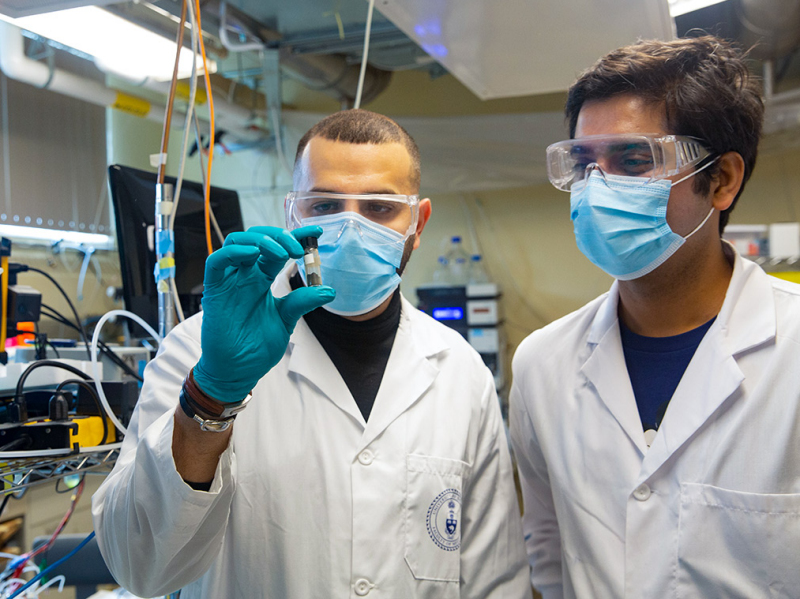Image: University of Toronto
University of Toronto researchers have demonstrated quantum inspired computing to find a catalyst that could improve the efficiency and lower the cost of green hydrogen production.
The promising new catalyst, on which further work is needed before it can go into real-world demonstration, holds the potential for scaling up the production of green or clean hydrogen as a contributor to the energy transition.
But no less significant for the researchers is the development of the techniques which have enabled the discovery and which open the way for the search for promising new materials for other applications.
Quantum inspired computing emulates quantum phenomena on classical hardware to thereby provide a speed-up over traditional computation techniques without the need for a quantum computer itself.
The technique utilised by the University of Toronto researchers, which was developed in partnership with Fujitsu – and which is similarly being developed by other research groups elsewhere – in essence involved searching through combinations of materials to find those with the most desirable properties.
Up to now this task has been based either on human intuition, drawing on previous findings, or on computer modelling of pre-determined material combinations.
The researchers used a technique called cluster expansion to analyse an estimated hundreds of quadrillions of material designs, with the results pointing to a previously unexplored family of materials composed of ruthenium, chromium, manganese, antimony and oxygen.
Synthesis of several of these led to the finding that the best of them demonstrates a mass activity – a measure of the number of reactions that can be catalysed per mass of the catalyst – of approximately eight times higher than some of the best catalysts currently available.
The new catalyser also is reported, among other benefits, to operate well in acidic conditions, which is a requirement of state-of-the-art electrolyser designs.
Currently, the catalysts for electrolysers are made largely of iridium, which is a rare element that is costly to obtain. In comparison, ruthenium, the main component of the new catalyst, is more abundant and has a lower market price.
“Scaling up the production of what we call green hydrogen is a priority for researchers around the world because it offers a carbon-free way to store electricity from any source,” says Ted Sargent, a professor in the University’s Department of Electrical and Computer Engineering and senior author of the research findings.
“This work provides proof-of-concept for a new approach to overcoming one of the key remaining challenges, which is the lack of highly active catalyst materials to speed up the critical reactions.”
Co-author Hitarth Choubisa, a PhD candidate, adds that the project shows how complex problems can be solved by combining expertise from different fields.
“For a long time, materials scientists have been looking for these more efficient catalysts and computational scientists have been designing more efficient algorithms, but the two efforts have been disconnected. When we brought them together, we were able to find a promising solution very quickly. I think there are a lot more useful discoveries to be made this way.”
